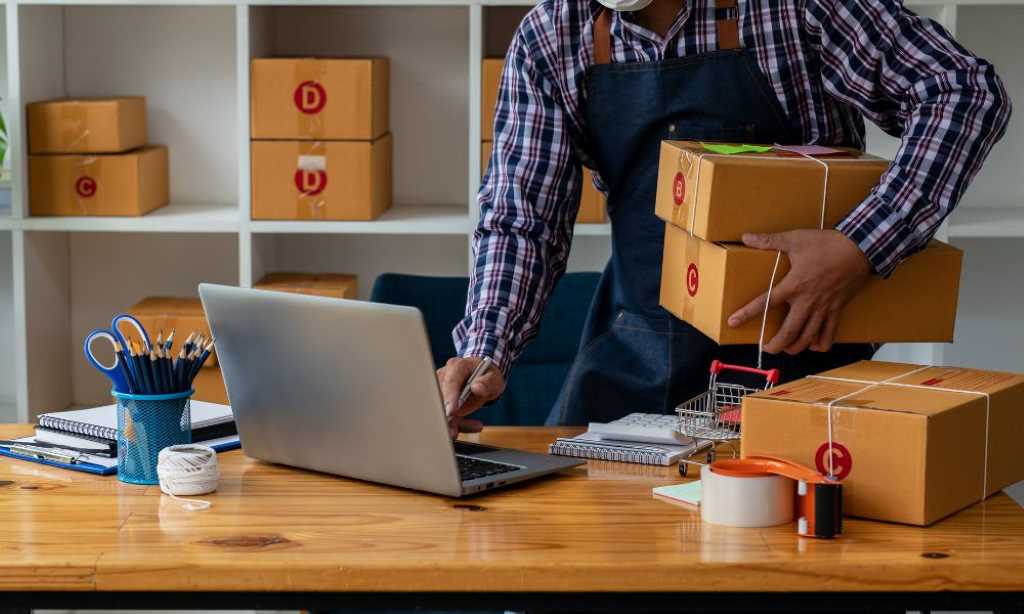In the bustling world of e-commerce, ensuring your products reach customers in pristine condition is paramount. Effective packaging, efficient storage, and well-chosen accessories are the cornerstones of a positive customer experience and repeat business. Let’s delve into this comprehensive guide, designed to equip you with the knowledge needed to excel in the accessories for e-commerce success landscape.
Packaging: The First Impression That Matters
- Types of Packaging Materials:
- Corrugated Cardboard Boxes: Durable and customizable, ideal for most products.
- Poly Mailers: Lightweight and cost-effective, suitable for soft goods.
- Bubble Mailers: Added protection for fragile items.
- Rigid Mailers: Protection against bending for documents or flat items.
- Custom Packaging: Elevate your brand with unique designs and materials.
- Selecting the Right Packaging:
- Product Size and Weight: Ensure a snug fit to minimize movement during transit.
- Fragility: Add cushioning materials (bubble wrap, air pillows, packing peanuts) for delicate items.
- Environmental Impact: Opt for eco-friendly materials where possible (recycled cardboard, biodegradable fillers) to support profitable small businesses.
- Packaging Best Practices:
- Secure Closure: Use strong tape to seal boxes and prevent accidental opening.
- Clear Labeling: Include shipping labels, return addresses, and handling instructions.
- Branding: Add your logo or brand elements to packaging for a professional touch.
Storage: Maintaining Product Integrity
- Warehouse Considerations:
- Climate Control: Temperature and humidity can affect some products (electronics, food).
- Organization: Clear labeling and categorization streamline order fulfillment.
- Security: Protect your inventory from theft or damage.
- Storage Equipment:
- Shelving Units: Adjustable shelves to accommodate various product sizes.
- Pallet Racks: Store large quantities of products efficiently.
- Bins and Containers: Organize smaller items.
- Inventory Management Systems:
- Stock Tracking: Monitor inventory levels to avoid overselling or running out of stock.
- FIFO (First-In, First-Out): Ensure older products are shipped first to prevent spoilage.
Accessories: Enhancing the Unboxing Experience
- Protective Inserts:
- Cardboard Dividers: Separate items within a box.
- Foam Inserts: Mold to the shape of products for a custom fit.
- Protective Corners: Prevent damage to edges and corners.
- Void Fill:
- Air Pillows: Inflatable cushions that fill empty space in boxes.
- Packing Peanuts: Loose fill for cushioning (consider eco-friendly alternatives).
- Crinkle Paper: Decorative and protective filler.
- Branding and Personalization:
- Custom Tissue Paper: Wrap products with branded tissue paper.
- Thank You Notes: Include a handwritten note or printed card to express gratitude.
- Samples or Promotional Materials: Encourage repeat business with small gifts.
Tips for E-commerce Success
- Stay Informed: E-commerce packaging trends evolve. Keep up with new materials and technologies.
- Test and Optimize: Experiment with different packaging options to find what works best for your products.
- Partner with Experts: Consider working with fulfillment centers that specialize in e-commerce packaging and shipping.
Additional Resources
- Sustainable Packaging Guide: https://supplychaingamechanger.com/sustainable-packaging-is-here-to-stay/
- E-commerce Packaging Trends: https://www.linkedin.com/pulse/five-packaging-trends-businesses-following-why
Conclusion
Packaging, storage, and accessories are not mere logistical considerations; they are powerful tools to shape customer perceptions, drive brand loyalty, and ensure the success of your accessories for e-commerce success venture. By following this guide and staying informed about industry trends, you’ll be well on your way to delivering exceptional experiences that keep customers coming back for more.


